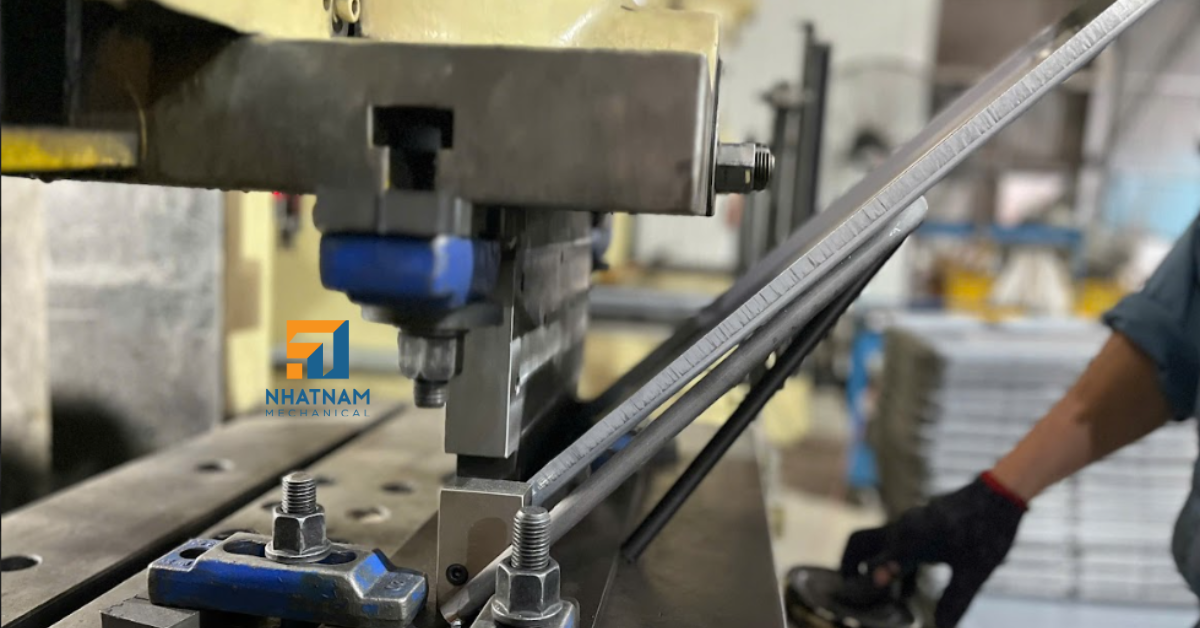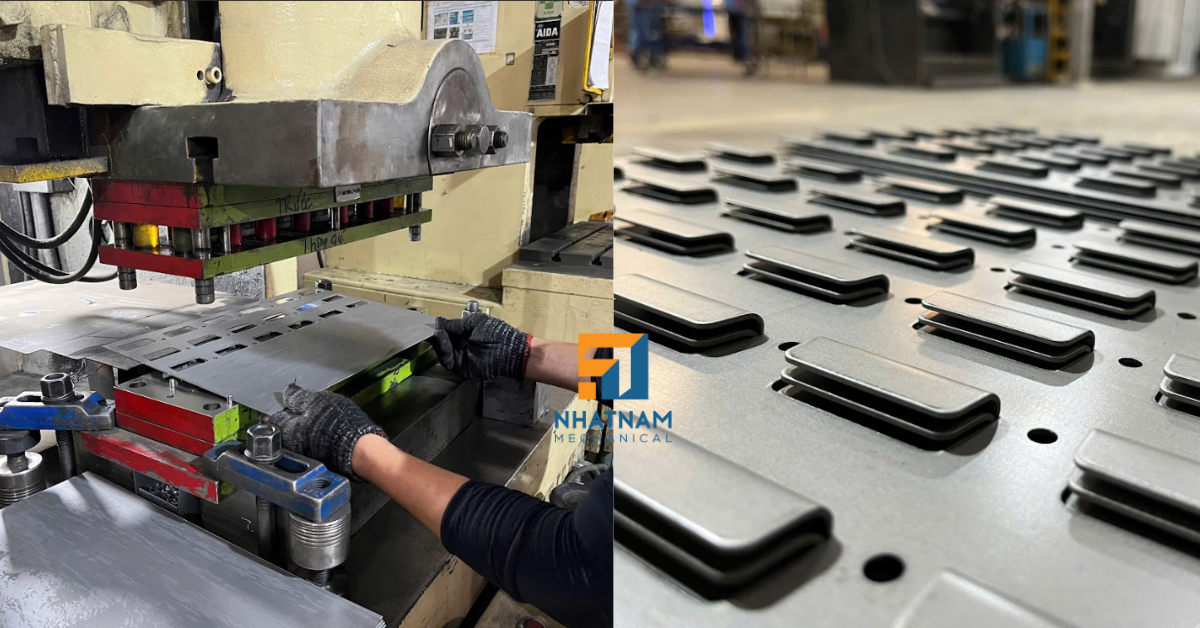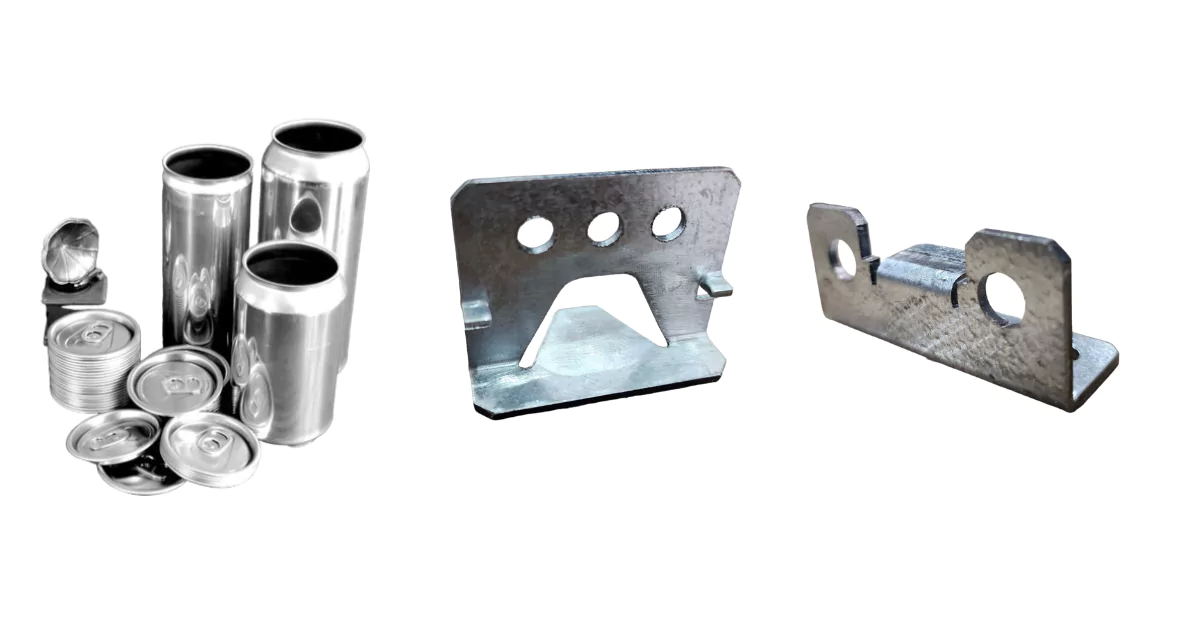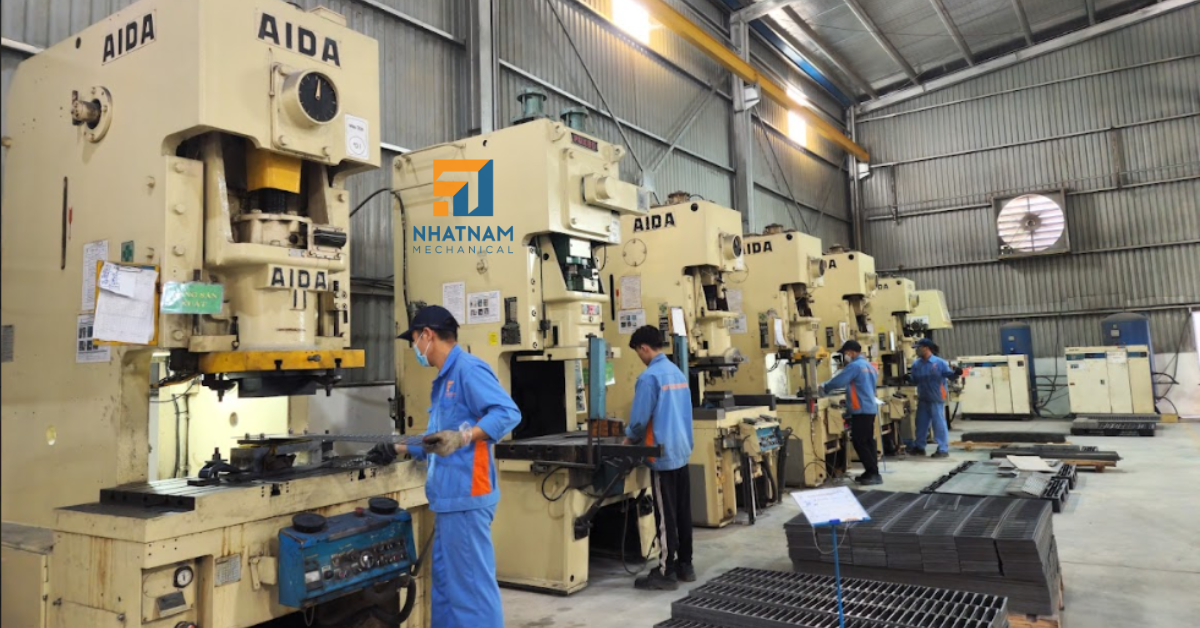
In modern industrial production, the sheet metal stamping process is a popular technique to create precise, uniform, and cost-effective parts. This process is widely used in the automotive, aerospace, electronics, medical, and home appliance industries.
However, to achieve these benefits, the quality at each stage of the stamping process plays a decisive role. A small mistake can lead to high costs, disrupt production, and affect the reputation of the business.
What is quality in sheet metal stamping?
Quality in the sheet metal stamping process does not stop at the final product but also includes:
- Dimensional accuracy.
- Consistency between parts in the same production batch.
- Durability, load-bearing capacity, and product life.
- Smooth surface finish, free from scratches or deformation.
Why is quality important?
- Ensure precision in assembly
In industries such as automotive or electronics, each metal stamping part must fit exactly with other components. Even a 0.1 mm deviation can damage the entire assembly, causing great waste. - Reduce production costs
High-quality parts from the beginning help reduce scrap and limit re-production. This allows businesses to save significantly on material costs, labor, and time. - Improve product durability and performance
A precisely stamped, durable part will help the product operate more safely and stably, especially in harsh environments such as engines and industrial machinery. - Protect brand reputation
Customers always appreciate durable, aesthetically pleasing, and stable products. Poor quality will lead to complaints, returns, and loss of trust — something that is difficult to regain.

Consequences of poor quality
- Increased scrap rate → costly.
- Delayed delivery schedule → affects the supply chain.
- Loss of long-term customers → reduced competitiveness.
- Safety risks if defective products are put into use.
How to ensure quality in sheet metal stamping?
The quality in the sheet metal stamping process does not come from a single factor but is the result of a combination of materials, dies, equipment, control processes, and people. To ensure that the final product meets the standards, the following key points need to be focused on:
- Select the right material from the beginning
- Thickness and alloy composition: Materials that are too hard can cause rapid die wear, while materials that are too soft can easily cause unwanted deformation.
- Mechanical properties: The tensile strength, bending resistance, and elongation of the material directly affect its ability to be stamped without cracking or tearing.
- Material surface treatment: The surface must be clean, free from oxidation, grease, or dirt to avoid affecting the accuracy and quality of the part.
Enterprises need to have clear standards when importing materials, combined with physical testing to ensure stability.
- Die & tooling design and maintenance
- Optimal die design: The die must be accurately calculated for stamping force, stamping direction, and clearance between the punch and die. If the clearance is not standard, the product is prone to burrs, edge deformation, or size deviation.
- Die material: Typically made of high wear-resistant alloy steel (SKD11, D2, carbide…) to ensure longevity.
- Periodic maintenance: The die needs to be cleaned, polished, and worn parts replaced to maintain consistent quality.
“A good die is half the success of the metal stamping process.”
- Stamping equipment and operating conditions
- Stable stamping force: The stamping machine must have appropriate capacity, avoiding overload or insufficient force.
- Lubrication system: Proper lubrication helps reduce friction, limit die wear, and improve product surface quality.
- Speed and stroke control: Each type of material and product shape requires a different stamping speed. Excessive speed can easily cause cracking, while too slow reduces productivity.
Machine condition must be monitored regularly, not only during maintenance but also during production.
- Quality control and inspection system (QC)
- Input inspection: Materials are tested for mechanical properties, thickness, and surface before being stamped.
- In-process inspection: Random sampling during production to measure size, warping, bending angle, etc.
- Final inspection: Ensure 100% of products meet technical requirements; defective products must be removed before delivery.
- Use of advanced measuring equipment: CMM (Coordinate Measuring Machine), surface roughness tester, tensile testing machine to increase accuracy in evaluation.

- Apply automation technology and digital transformation
- Monitoring sensors in stamping machines: Instantly detect problems such as cracks or abnormal deformation.
- Production data analysis (Data Analytics): Monitor productivity, defect rate, and predict maintenance needs (Predictive Maintenance).
- Robots and automation systems: Reduce human errors, ensure high production speed while maintaining quality.
- Human factors and management processes
- Personnel training: Workers and technicians must clearly understand material properties, machine operation, and inspection techniques.
- Standard operating procedures (SOP): All processes from material preparation, die installation, machine operation to inspection must have specific guidelines.
- Quality culture in the enterprise: Every employee is responsible for detecting and reporting errors for timely correction.

Long-term benefits of focusing on quality
- Overall cost savings: Less scrap, reduced error correction costs.
- Increased reliability: Stable products, consistent quality.
- Competitive advantage: High quality helps businesses stand out in the market.
- Building sustainable customer relationships: Creating trust and long-term cooperation.
Conclusion
In the sheet metal stamping process, quality is a key factor — determining not only the final product but also influencing costs, lead time, and the reputation of the business.
Nhat Nam Mechanical always considers quality the top priority. With a strict control system, modern machinery, and a team of experienced engineers, we specialize in sheet metal fabrication and are committed to delivering accurate, durable, and reliable metal stamping parts for our customers.

